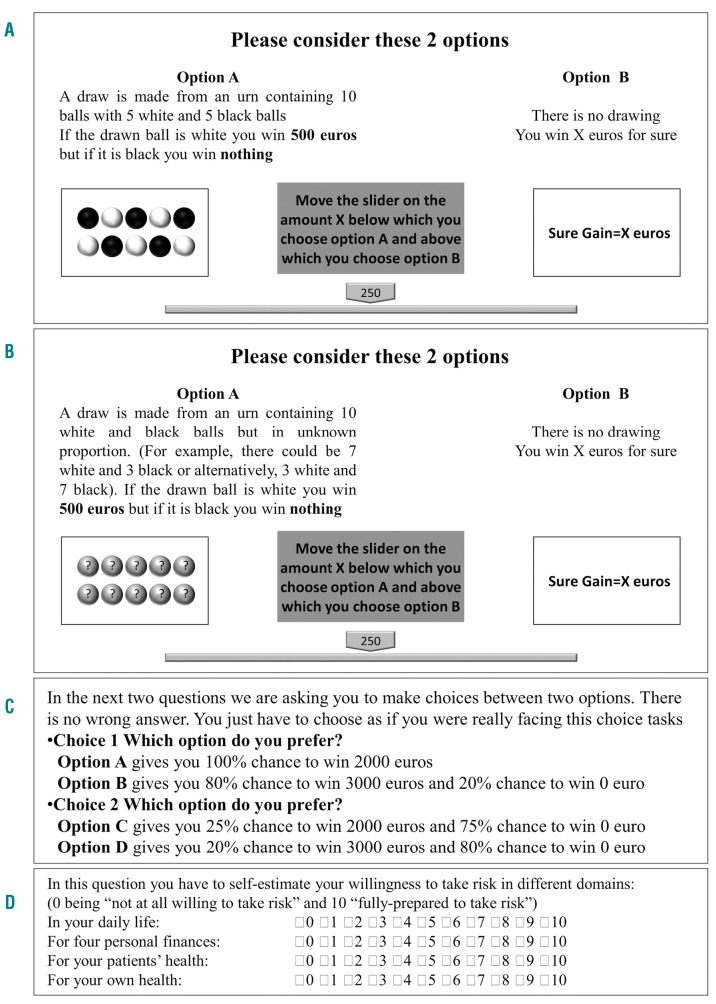Figure 1.
Behavioral tasks. (A) Physician’s individual risk aversion evaluation. The closer the scroll bar is to 500 euros, the more risk-seeking the behavior; the lower the score bar, the greater the aversion to risk. E.g. if the scroll bar is at 200 euros, the person prefers a 50% chance of winning 500 euros to a 100% chance of winning 190 euros. If the scroll bar is at 300 Euros, the person prefers a 50% chance of winning 500 euros to a 100% chance of winning 290 euros. The latter is riskier since you are giving up more certain money (290 vs. 190) for a chance to win the same amount (500 euros). (B) Physician’s individual uncertainty aversion evaluation. The same line of reasoning applies to the uncertainty aversion evaluation except that for option A, the probability of gain is unknown. The closer the scroll bar is to 500 euros the more uncertainty-seeking the behavior; the lower the scroll bar, the greater the aversion to uncertainty. (C) Classic binary choices from Kahneman and Tversky. Choice patterns AC and BD conform to the expected utility theory. Choice patterns AD and BC do not conform to expected utility theory (for further details see Online Supplementary Appendix, Section 2). (D) Self-evaluation of the willingness to take risk in four different domains.

